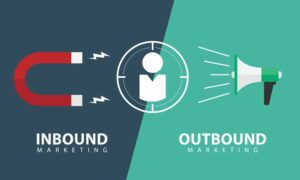Sales Enablement is one of the newer services that we’ve started offering, but I believe that it’s really a crucial part to a company’s growth strategy, especially if they’ve already invested in an inbound marketing or lead generation strategy.
Generally, a business will have a moment where they realize that their website is not working hard enough for them, and they create, or hire someone to create, an inbound marketing strategy. They’ll create their personas, define their sales journeys, create a content calendar, invest in some marketing automation software, and start generating leads. This is a huge step in the right direction.
But, I’ve started hearing from some of the clients that I work with that, although they have more leads, they’re not able to discern who is a hot lead and who is a cold lead. As a result, their sales rep end up following up with everybody instead of just those who are most ready to buy now.
At its core, Sales Enablement is about aligning your marketing team and sales team, investing in technology that helps your sales team save time and increases productivity, creating a streamlined sales process that delights your potential customers with every touchpoint, and iterating over the process to increase your close rate.
Creating a strong sales process will allow your sales reps to sell more. Your contact database will be current and clean, your funnels will provide transparency about future growth, your team will have valuable content at their disposal to help them sell, and you will have an automated system that is always working to assist your sales team in determining good fit vs bad fit clients.
How To Upgrade Your Sales Process
1. Define your Sales Process
If you don’t have a well-thought out sales process that identifies all of the stages of your sales process, then the majority of your sales reps will struggle. Newer reps will have to make up their own process, and over time will find success. Since all of your reps will be working their own unique process, it is going to be very difficult for executive level leadership to get a grasp of what’s in the pipeline, and how likely each deal is to close.
Once you articulate all of the key stages of your sales process, you can provide your reps with better training, better resources, and, ultimately, a better shot at success.
2. Create an Inbound Sales Mindset
Inbound Marketing is about putting the customer first by providing value at every step of the customer’s journey. The mantra with Inbound Marketing is Attract, Convert, Close, Delight. It provides valuable, personalized content to answer a potential customer’s most pressing questions, and over time it qualifies the customer to be passed off to a sales rep.
The quickest way to lose this lead is to muck up the handoff between your marketing team and your sales team. The reason that Inbound Marketing works so well is because decision makers expect the companies that they deal with to be human, helpful, and personal. We’ve all had bad experiences with slimy salespeople, and they rub us the wrong way because sales is often inhuman (and sometimes even inhumane).
In my previous life, I worked at a bank. It would be April, and we would be running a credit card promotion. For every credit card that I sold, I would get $50. So I was told to get on the phone and make it happen. The conversation would go something like this: “Hi, Mr. SuchandSuch, this is Brian from the bank. I’m calling to let you know that we’re running a credit card promotion right now, and that if you sign up today, you’ll get 1,000 rewards points. Would you like to apply for our credit card?”
If they said no, I would low-key argue with them (my bank training said it was ‘overcoming objections’).
What a miserable experience for everyone.
If my bank had embraced Inbound Sales, the conversation might go like this: “Hi, Mr. SuchandSuch, this is Brian from the bank. You’ve been with us for ten years now, and I wanted to give you a call to say that we really appreciate your business. While I have you, are there any questions or issues that you’ve run into that I can help with? I don’t want for you to feel any pressure, but if you don’t mind, I’d like to email you some information about a credit card promotion that we’re running right now. Our credit card has helped a lot of our customers have access to quick cash in an emergency, and our Reward Program is solid. Look it over, and if you have any questions, just hit Reply and I’d be happy to help out however I can.”
Doesn’t that feel more human? In case you were wondering, toward the middle of my career at that bank, I threw out all the scripts that they gave me in favor of more human conversation and I was the top sales person in the region almost every month throughout the duration of my career there. So, trust me, this gets results.
If you empower your sales people to be human and helpful, your Sales Calls become Discovery Calls, your sales emails become friendly emails, your close rate will go up, and you’ll cross-sell and up-sell services at a much higher rate.
3. Create Resources for Your Team
If you’ve done your persona and buyer’s journey research, then you’re very aware of who your ideal customers are and the objections that they may have. Create high-quality content that your sales team can share with customers as part of the sales process to continue building brand loyalty and answer questions that your leads have. Every call should have a follow up email that provides links to more info, social proof that your product or service works, and links to indicate buying signals.
If you follow these three steps, you’re well on your way to building a great sales team.





